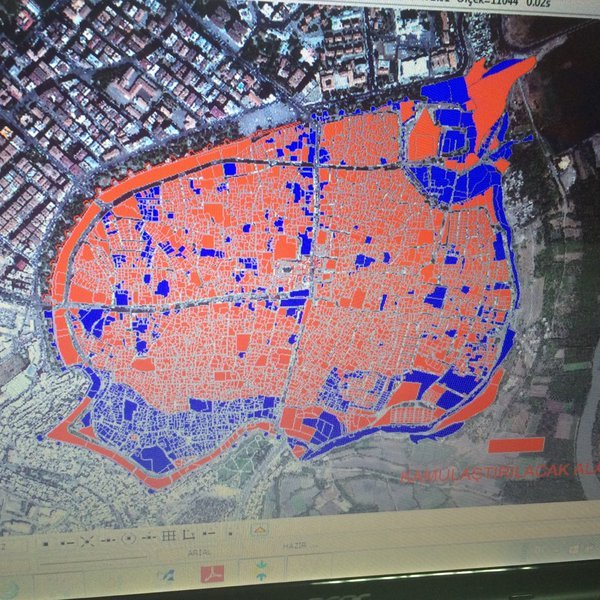This essay was published (in Chinese) in Oriental Business as “The New Turkey after the Coup,” by Jenny White, September, 2016.
In the massive rallies that followed the failed coup in Turkey, President Erdogan hailed his people, representatives of the “New Turkey”, for sacrificing their lives by throwing themselves in front of the tanks. The “new” Turkey as envisioned by Erdogan is a nation that is ruled by its people, by which he means the majority — the kind of people that voted for him — and shaped in their image. President Erdogan always refers his decisions back to Milli Irade, or the National Will, the concrete embodiment of the people’s rule. The New Turks are pious Muslims who value their religion as the foundation for national unity and who revere the traditional conservative family that mirrors and models the nation. The traditional family, of course, is patriarchal and requires modesty and obedience from its members, much like model citizens in their interaction with the state. Erdogan is the patriarch, the strong, protective leader who cannot be questioned.
On the one hand, this is very different from the previous Kemalist national model, which was based on the idea that Muslim Turkish blood is what united the nation and propagated a continual state of fear that purity of blood and national unity would be undermined by enemies from abroad. The greatest duty of the Kemalist citizen was to be ready to shed that blood to defend the country from evil-intentioned outside powers and their internal cats’ paws, Turkey’s non-Muslim minorities, whose patriotism was always in doubt.
On the other hand, certain themes of the New Turkey have deep roots. The Kemalist nation, although it encouraged women in education and the workforce, was also modeled on the traditional family, with the military as guardian and ultimate arbiter of the safety and unity of the national family. A citizen’s duty was to obey the state. Polls show that a majority of the Turkish population has been and still is pious, highly conservative, and intolerant of outsiders, so it is not surprising that political propaganda relies on familiar social and cultural images. Both models are intolerant of anyone whose origin, sect, lifestyle and views differ from the majority they represent. Kemalism, although a secular ideology, defined Turkishness as having Muslim Turkish blood, not as Turkish citizenship, thus leaving non-Muslim citizens out of the national family. Erdogan’s New Turkey bases national identity on Sunni Islamic belief and Turkish culture, neither of which are geographically fixed within Turkey’s 1923 borders.
Indeed, one major difference is the expansion of the New Turkey geographically and into the past. Kemalists focused on the embattled borders within which the nation state of Turkey was established in 1923. The founding moment on which the New Turkey is based is 1453, the conquest of Christian Byzantium by the Muslim Turks. New national rituals, including the reenactment of the Conquest, have pushed aside Kemalist national rituals. Thus, a New Turk could just as easily live in any of the previous territories of the Ottoman Empire as long as they share Turkish culture, language, and Sunni piety. The New Turkey could become a world power, as it had been in the past. Not through territorial expansion, but through economic and cultural conquest. This dream was exploded by the Arab Uprisings, among other things, but Erdogan’s pivot toward Russia, Israel, and Africa is based on this vision of the New Turkey as a world power.
Both models of the nation repress parts of the population that don’t fit the model. In the Kemalist case, citizens without Turkish Muslim blood, but also pious citizens who haven’t adopted the Kemalist program of secular modernization. In the New Turkey, it is anyone who isn’t pious. In the first ten years of its rule, AKP accommodated religious and ethnic differences, but that tolerance has now eroded. The word traitor plays a central role in both national models, as the insider who turned against the group. The worst traitor is the one who had been closest to your bosom, like the Gulen movement that had partnered with AKP for many years before falling out and which Erdogan has declared a terrorist organization and Enemy Number One, hunted down in the post-coup purge. This is a Sunni-Sunni fight; the secular-Islamic rift so often trotted out as an explanatory framework, is not useful for understanding divisions within the New Turkey.
Much depends on what Erdogan does next. He is pragmatic and wants to stay in power, so he could go either way, toward greater polarization (attacking Alevis, non-Muslims, secularists — the people not represented by the National Will and thus not in the national family) or he could turn on a dime and stretch out a hand of good will, as he has just done with Israel, Russia, Iran, and even Egypt’s Sisi and, grudgingly, Syria’s Assad. The coup has strengthened Erdogan’s hand, as he has now under the post-coup state of emergency, without consulting parliament, finished undermining the independence of all major state and civic institutions in the country and reshaping them in his image. It is not surprising that posters with the logo, Milli Irade (National Will) also bear Erdogan’s picture. The premise of the New Turkey is that the ballot box legitimates Erdogan as the embodiment of the national will, in other words, a democratically elected dictatorship.
Tags: Nationalism, Politics, Rights, State of the Nation // 3 Comments »
